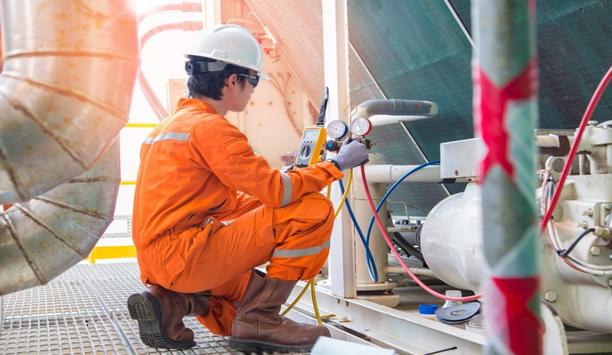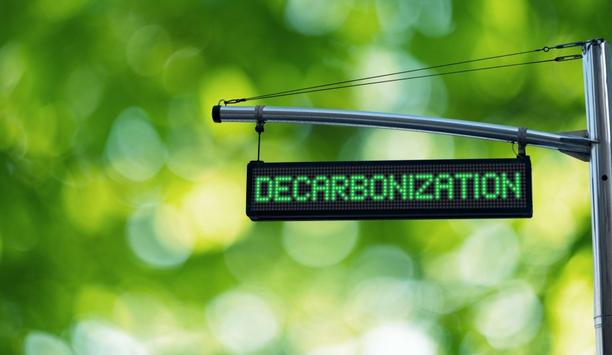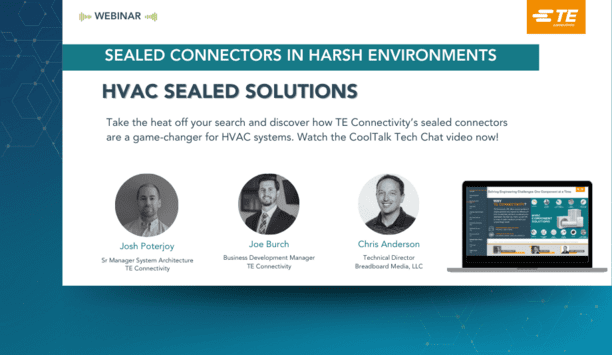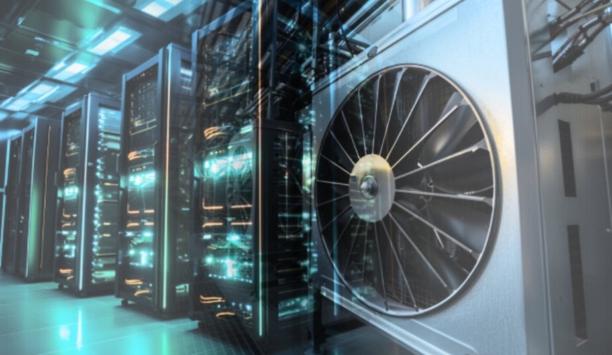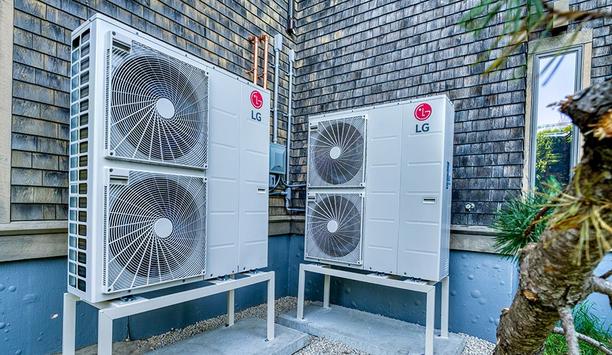ECM Technologies - Experts & Thought Leaders
Latest ECM Technologies news & announcements
ECM Technologies (ECMT), a globally renowned provider of HVAC efficiency and energy conservation solutions, is pleased to announce the promotion of Sofia Lozoya to Vice President (VP) of Marketing and Creative. In this expanded role, she will oversee the development, coordination, and execution of all marketing, advertising, and public relations initiatives, driving both digital and traditional strategies to meet client and company goals. new responsibilities She will also serve as a key Brand Manager, responsible for shaping the company’s brand identity Sofia Lozoya’s appointment comes at a pivotal time for ECMT, as it continues to expand its footprint in the HVAC industry. With a data-driven approach, she will ensure marketing campaigns are strategically aligned, measurable, and results-focused, further strengthening ECMT’s market position. She will also serve as a key Brand Manager, responsible for shaping and maintaining the company’s brand identity, ensuring it remains forward-thinking and synonymous with innovation in sustainable solutions. Central to this identity is the company’s signature product, ThermaClear®, which dramatically improves HVAC system efficiency with a single treatment lasting the equipment's entire lifespan. ThermaClear® - cost-effective technology “Sofia’s vision and leadership have been instrumental in elevating ECM Technologies’ brand and positioning ThermaClear as the pioneering cost-effective technology in the HVAC sector for reducing energy consumption and emissions,” said David Fenton, Chief Revenue Officer of ECM Technologies. He adds, “Her ability to seamlessly integrate creativity with strategic execution sets her apart, and we are excited to see her excel in this expanded role.” Sofia Lozoya's education Sofia Lozoya holds a Master’s degree in Global Management with a concentration in global business and marketing from Thunderbird School of Global Management. Beyond her marketing role, she serves as an Advisor to ECMT’s Executive Committee, offering key insights on strategic initiatives and company growth.
ECM Technologies (ECMT), a pioneer in heating, ventilation, and air conditioning (HVAC) efficiency and energy conservation, announced its strategic partnership with Tolin Mechanical, the pioneering commercial HVAC service company in the state of Arizona. The collaboration will combine Tolin’s extensive expertise in commercial HVAC preventive and predictive maintenance services and related energy sustainability services with ECMT’s industry-changing nanotechnology, ThermaClear®. Partnership with ECM Technologies “At Tolin, we pride ourselves on offering the most innovative preventative maintenance and service solutions, and ThermaClear’s cutting-edge technology will allow us to provide our clients a level of equipment protection no other commercial HVAC company in Arizona will be able to do,” said Tolin Mechanical Arizona Business President, Bryant Kuvakos. “Our exclusive partnership with ECM Technologies allows us to introduce the ThermaClear Advantage Plus program that will enhance our service offerings and provide our clients with superior system performance and longevity. This collaboration ensures that both Tolin, as a service company, and our customers, benefit symbiotically from the increased efficiency and reliability that ThermaClear brings to HVAC systems.” ThermaClear treatment ThermaClear treatment under the alliance was acted in April of this year and was donated by firms The first ThermaClear treatment under the partnership was performed in April of this year and was donated by both companies to all Boys & Girls Clubs of the Valley. Subsequent treatments in recent months have included facilities for the City of Mesa and Maricopa County government, utilizing the $2.5 million City of Phoenix treatment contract that was qualified into the Strategic Alliance for Volume Expenditures (S.A.V.E.) program. Other notable companies and organizations in the Greater Phoenix area utilizing ThermaClear include JP Morgan Chase, Arizona State University, Penske Automotive, Bombardier, and Phoenix Art Museum. Heat transfer surfaces for HVAC systems “We could not be happier with our strategic partnership with Tolin. We recognize the value of working with only well-known highly respected and established commercial HVAC service companies. After years of working with most of the top companies in Arizona, Tolin clearly stood out from everyone else. No one comes close to their level of service and expertise,” said ECM Technologies Chief Revenue Officer David Fenton. ThermaClear addresses the pervasive issue of oil fouling affecting most HVAC equipment. According to The American Society of Heating, Refrigeration and Air-Conditioning Engineers (ASHRAE), oil fouling of the heat transfer surfaces for HVAC systems results in 7% efficiency loss in the first year, followed by 5% in the second year and 2% annually thereafter. Lifespan of the HVAC system ThermaClear conquers oil fouling by clearing the coil system from the inside, removing the oil barrier and super-lubricating the compressor. In the process, it also bonds to the interior of the coil walls, forming a permanent barrier against future buildup and protecting against thermal degradation. In addition to only requiring a single treatment of ThermaClear for the entire lifespan of the HVAC system, building owners/facility managers can expect a payback on their treatment investment in approximately 12 to 18 months. This positions ThermaClear as not only one of the most effective HVAC efficiency initiatives available on the market but also one of the most affordable.
ECM Technologies, a pioneer in HVAC efficiency and energy conservation, has named Andrew Soulier as its first Chief Sustainability Officer (CSO). In this role, Andrew Soulier will oversee all aspects of sustainability for the business, including strategic leadership, market development, and stakeholder engagement. He is also responsible for embedding environmental stewardship and leading practice in all aspects of manufacturing, operations, and distribution. Prior roles of Andrew Soulier Extensive track record and knack for simplifying complex problems has made him a trusted advisor Before joining ECM Technologies, Andrew Soulier was the Founder and CEO of Net Positive Advisors, a sustainability consulting and strategy firm, based in Phoenix. Prior to that, he spent over a decade with Ernst & Young LLP (EY), driving energy, sustainability and green building projects in a variety of industry sectors around the world. His extensive track record and knack for simplifying complex problems has made him a trusted advisor to many Fortune 500 companies, private equity investors, professional services firms and state/local governments in the United States and abroad. Benchmarks for environmental responsibility “We could not be more thrilled to welcome Andrew to our leadership team. Bringing in a trailblazer of his caliber will help us compound our sustainability efforts and further position ThermaClear® as a pioneering solution to cost-effectively reduce energy and emissions,” said David Fenton, the Chief Revenue Officer for ECM Technologies. David Fenton adds, “Andrew’s expertise and credibility will help forge innovative partnerships, drive sustainable initiatives and set new benchmarks for environmental responsibility within the industry. Most of all, he really knows how to validate the business case for sustainability.” Educational Background A resident of Phoenix, Andrew Soulier received a Bachelor's degree in Mechanical Engineering from Arizona State University. He is a LEED-Accredited Professional (LEED-AP®), Certified Energy Manager®, and a former IRS Enrolled Agent. Outside of work, Andrew Soulier volunteers his time to the U.S. Green Building Council (USGBC), where he sits on the Market Leadership Advisory Board and frequently mentors young professionals. He’s also an ambassador for the Translational Genomics Research Institute (TGen), an Ariz. non-profit focused on cutting-edge immunotherapies and specialized medicines.
Insights & Opinions from thought leaders at ECM Technologies
Each day we’re reading headlines about decarbonization ambitions for buildings while challenged with supporting day-to-day operational needs. Yet, we’re still tasked with delivering energy and cost reductions. Given the magnitude of energy consumption and the importance to occupant/tenant comfort, HVAC systems warrant significant attention. There are a lot of options with new equipment and controls to drive energy use down and enhance overall comfort that are very impactful, when budgets allow. However, there are budget friendly options that should be considered now. There are aftermarket products that restore lost performance efficiency, reduce loads on equipment and extend equipment life. A challenge is knowing which products really work and what can be trusted. Refrigerant additives have been around for decades, solving several issues including improved thermal heat transfer, reduced frictional forces through enhanced lubrication, acid scavengers, water displacement, stop leaks, and the list goes on. Over forty years ago, some of the first refrigerant treatments were formulated, with varied results. The principal objective was twofold: enhance the heat transfer from the refrigerant to the heat exchanger coils and reduce friction on the compressor moving parts. How to reduce compressor friction and keep it low Industry offered improvements to refrigerant oils, building on synthetic oil development HVAC systems include oil to lubricate the compressor mechanical moving parts with mineral oil being the old standard, used for decades. Older systems with R-22 refrigerant, as well as other types, use mineral oil. This oil, made from naturally occurring crude petroleum oil, is prone to breakdown over time from wear and elevated temperatures. This means hermetically sealed compressors operating with the same oil as when originally built are running with greatly diminished friction protection. Friction protection longevity was greatly improved with the advent of synthetic oils, but even these oils can see diminished protection from wear and elevated temperatures. Industry offered improvements to refrigerant oils, building on synthetic oil development. Two additives commonly found in gear oils include active sulfur with phosphorus, noted as Extreme Pressure (EP) gear oils. This same approach found its way to HVAC systems, adding materials that offered greatly improved friction reduction. Some mistakes were made, such as using polytetrafluoroethylene (PTFE), best known as Teflon. Although PTFE has phenomenal lubricating properties, it is too large of a minimum particle size, creating havoc within expansion valves. Teflon also received scrutiny by researchers identifying adverse health effects. Today, there are several technologies promoting improved refrigerant lubricants, either as a direct replacement or as an additive to existing oils. How to restore lost HVAC performance efficiency The refrigerant oils that keep compressor moving parts running serves a second important role: acting as a seal to keep compressed refrigerant from escaping from the compressor and ending up in the oil sump. HVAC engineers allow and design for some oil to migrate through the refrigerant loop, the condenser and evaporator coils. More sophisticated equipment, such as chillers, have features to collect and return most of this oil. Simpler systems rely on the high velocity of the refrigerant to pull the oil through the coils and return it to the compressor. Inevitably, some oil remains as a film on the heat exchanger coils and slowly builds through the operational life of the equipment. The oil buildup continues to reduce the heat transfer efficiency between the refrigerant and the coil walls. There have been numerous formulations brought to the market with few detailed accounts of chemistry specifics An opportunity was born for creative individuals to invent formulations that would remove this efficiency robbing oil layer. Early design attempts sometimes led to more problems than the efficiency improvements were worth. Some chemistry mistakes included using solvents or other cleaning agents to aid in removing oil from heat exchanger tubing. This diminished the effectiveness of the refrigerant oil and led to shortened equipment lives. There have been numerous formulations brought to the market over the past four decades with few detailed accounts of chemistry specifics. There are few patents in addition to product website information that offer limited details in the public domain, making it hard to trust the suppliers. Today’s formulations offer greater opportunity for realized performance gains, especially given advances in material science. Nanomaterials have enabled several newer solutions to be developed. One such product employs graphene, which is known for its fantastic heat transfer and lubricating properties. Nanomaterials offer properties to enhance heat transfer, improve lubrication while negating concerns about excessive buildup within expansion valves. For example, graphene exists as a one atom thick nanomaterial. Perhaps the biggest challenge to the use of nanomaterials was how to keep the particles in suspension over the life of equipment, something that most specialty chemical houses hold as trade secrets. Some products offered today boost refrigerant performance, stating altered boiling points. The performance is achieved by adding particulate that acts as nucleating sites. As material science continues to advance, we’ll see more products enter the market that also address changes in the choice of refrigerants and refrigerant oils. How to select the best additive for your needs Make sure the formulation is compatible with your specific equipment, refrigerant and refrigerant oil When considering additives to reduce energy consumption for your HVAC refrigerant systems, your contribution to decarbonization, do your own due diligence and require validated performance efficiency improvements. Make sure the formulation is compatible with your specific equipment, refrigerant and refrigerant oil. Given that many sales agents won’t divulge their respective chemistry (or don’t know it) and most individuals responsible for HVAC equipment aren’t chemists, look for credentialed validations and testing. Ensure the products have been evaluated against ANSI standard compatibility tests and performance validated to ASHRAE or other accepted industry standards. What the market thinks of refrigerant additives Over the first few decades since the creation of efficiency improving formulations for refrigerants and refrigerant oils, there has been mixed market adoption. The early days of failed attempts with oil degrading use of solvents or the use of expansion valve clogging solids, left a lingering perception of “snake oil”. Only those businesses that took the time to sort through the offerings to find the truly validated products found success in reducing their HVAC energy use and an added benefit of extending the life of their equipment. Today the market is better accepting of newer technologies, gaining distance to the old wild west days of unproven formulations. Trust is being earned for those businesses that offer professionally validated products that stand behind them with warranties.
From A To L: Your A2L Transition Guide
DownloadLeveraging Radiant And Hydronics To Help Achieve Decarbonization Goals
DownloadSealed Connectors In Harsh Environments
DownloadPowering And Cooling Next Generation Data Centers
DownloadDebunking Myths To Promote A Bright Future For Heat Pumps
Download






